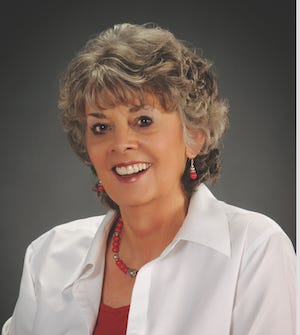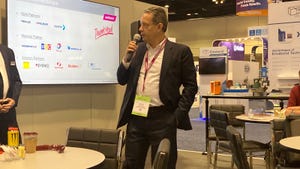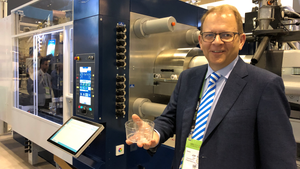Automotive suppliers ‘racing to keep up' with OEM production demands
The January survey released this month by the Original Equipment Suppliers Association (OESA; Southfield, MI) revealed that while the Supplier Sentiment Index (SSI) is down two points to 53 from November, it remains above 50, the benchmark. However, the same period a year ago showed an SSI of 61. While this positive outlook is a result of "positive projections for 2016 sales and production volumes, caution exists over 2016's political and economic environment," said the executive summary of the survey.
January 19, 2016
The January survey released this month by the Original Equipment Suppliers Association (OESA; Southfield, MI) revealed that while the Supplier Sentiment Index (SSI) is down two points to 53 from November, it remains above 50, the benchmark. However, the same period a year ago showed an SSI of 61. While this positive outlook is a result of "positive projections for 2016 sales and production volumes, caution exists over 2016's political and economic environment," said the executive summary of the survey.
|
Image courtesy Ambro/ |
Some of the other key findings for the OESA survey include production numbers that show utilization rates have moved higher, with median utilization up 5 percentage points to 85%, pushing suppliers to add capacity. The upper quartile increased from 86% to 90%; the lower quartile increased from 66% utilization in 2015 to 75% in 2016. For those suppliers at 90%+ "all-in" capacity, mitigating production risk means adding capacity through equipment or facilities, improving operating efficiencies, flexible working schedules and the use of alternate sourcing.
Additionally, companies continue to try and target conservative break-even volumes, but while production has increased by 112%, supplier break-even volumes have only increased by 51%. Finished goods inventory levels are decreasing. In 2014, 51% of suppliers indicated some level of increasing inventory. This year, only 34% of suppliers have increasing inventory levels, while decreasing levels have gained traction. Overall, the OESA survey showed that "suppliers are feeling less confident that customers' production releases are matching their sales and inventory levels as compared with last year; the decrease is slight, but it is down dramatically from 2011-2012."
The major challenge among automotive suppliers continues to be "a talent shortage," which the summary noted is a "primary barrier" to OEM requests for increased capacity. To combat this, said the survey summary, companies are developing and growing intern and apprentice programs, succession planning training and bolstering recruitment. Other barriers to OEM requests for increased capacity are capital investment and financing.
Daron Gifford, Partner leading automotive industry strategy consulting at accounting firm and consultancy Plante Moran in Detroit, noted in an article for PE Hub, "Auto Parts Suppliers Look for Capital to Grow and Compete," that "many parts makers are seeking newer sources of capital to fund their growth" and are "exploring innovative partnerships and venture capital investments, as well as more traditional funding sources." Gifford noted that parts suppliers "who survived by staying lean and shying away from adding capacity during and immediately after the recession, are now racing to keep up with OEMs' new vehicle launches and resulting production increases. Large Tier 1 manufacturers already feel the pressure, and sub-tier suppliers likely will feel the need to expand soon."
Other barriers to OEM requests for increased capacity include supplier tooling and tooling funds, as well as the supply chain capacity of the sub-tiers (Tier 2 and Tier 3), which, one respondent noted, "have not been able to invest at the same speed as the Tier 1s."
The most significant supply chain concern in meeting increased levels of production continues to be production scheduling, noted the OESA survey. Companies continue to monitor their supply chain for risk, communicating on many fronts. "Advanced planning is a focus along with increased supplier development activities," said the summary.
More than half of survey respondents have or are planning to bring production facilities into Mexico in 2016, and there is "great confidence that customer releases to those operations will be met," with 60% of those suppliers feeling either "very confident" or "somewhat confident" in their capabilities. The news isn't quite so good in the South American region, where there is continued concern over political and economic obstacles to a return to production volumes of 4.0 million units.
Plante Moran's Gifford noted in his article that globalization has its costs. "Major automakers are establishing or expanding operations in Mexico, in particular, which pushes suppliers to follow. Relocating near new assembly requires capital for factories, equipment, labor and retooling. Then there are potentially complicating issues such as currency volatility, hedging cost, profit repatriation and taxes."
About the Author(s)
You May Also Like





